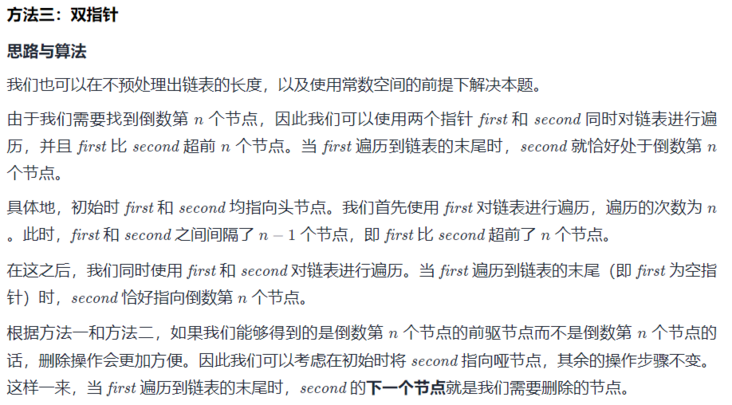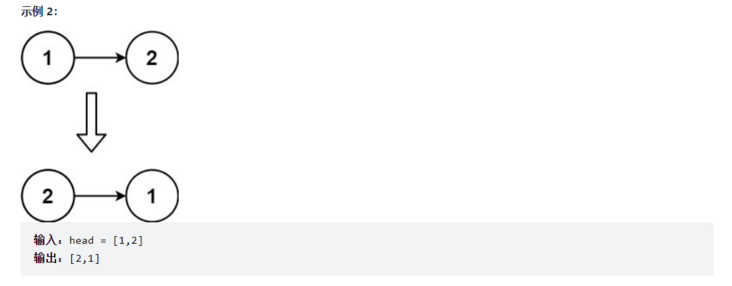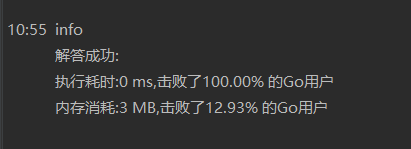The first question is to delete the penultimate node of the linked list
Topic information
Give you a linked list, delete the penultimate node of the linked list, and return the head node of the linked list.

Problem solving ideas
1. To delete the nth node, we only need to set a pointer, locate it to the previous node of N, and then change its next pointer to point to the next node of n.
2. Considering that the length of the linked list may be 1 and the previous node cannot be located, we introduce a new concept
The code is as follows
func getLength(head *ListNode) (length int) {
for ; head != nil; head = head.Next {
length++
}
return
}
func removeNthFromEnd(head *ListNode, n int) *ListNode {
length := getLength(head)
dummy := &ListNode{0, head}
cur := dummy
for i := 0; i < length-n; i++ {
cur = cur.Next
}
cur.Next = cur.Next.Next
return dummy.Next
}Complexity analysis
Time complexity: O(L+n), where l is the length of the linked list.
Space complexity: O(1).
Another way is to use the pointer

func removeNthFromEnd(head *ListNode, n int) *ListNode {
dummy := &ListNode{0, head}
first, second := head, dummy
for i := 0; i < n; i++ {
first = first.Next
}
for ; first != nil; first = first.Next {
second = second.Next
}
second.Next = second.Next.Next
return dummy.Next
}
Author: LeetCode-Solution
Link: https://leetcode-cn.com/problems/remove-nth-node-from-end-of-list/solution/shan-chu-lian-biao-de-dao-shu-di-nge-jie-dian-b-61/
Source: force buckle( LeetCode)
The copyright belongs to the author. For commercial reprint, please contact the author for authorization, and for non-commercial reprint, please indicate the source.Double pointer is a cool, powerful and common problem solving tool
Complexity analysis
Time complexity: O(L), where l is the length of the linked list.
Space complexity: O(1).
Question 2 reverse linked list
Topic information
Give you the head node of the single linked list. Please reverse the linked list and return the reversed linked list.


Problem solving ideas
The simplest and most violent idea is, of course
Use two pointers to point to the head and tail of the linked list respectively, and move to the middle of the linked list together to exchange their values one by one
code
func getLength(head *ListNode) (length int) {
for ; head != nil; head = head.Next {
length++
}
return
}
func reverseList(head *ListNode) *ListNode {
dummy := head//Point to head node
length := getLength(head)
tail := dummy //Point to tail node
for i := 0; i < length-1; i++ {
tail = tail.Next
}
for i:=0;i<length/2;i++{
dummy.Val,tail.Val=tail.Val,dummy.Val
dummy=dummy.Next
tail = dummy //Point to tail node
for j := 0; j < length-3-2*i; j++ {
tail = tail.Next
}
}
return head
}Complexity analysis
Time complexity: O (8/3n^2) = O (n^2) each time the exchange is completed, it is necessary to find the position of tail again. The length of the search is from n/2 to N, and N is the length of the linked list
Space complexity: O (1)
optimization
Obviously, because the single linked list can't search forward, we have done a lot of meaningless work when positioning forward. Such operation efficiency can't satisfy us.
Check the official answer, and the optimization is as follows
Use an auxiliary node to store the previous node, and choose to change the pointer to exchange nodes, which makes the exchange more convenient
The code is as follows
func reverseList(head *ListNode) *ListNode {
var prev *ListNode
curr := head
for curr != nil {
next := curr.Next
curr.Next = prev
prev = curr
curr = next
}
return prev
}
Author: LeetCode-Solution
Link: https://leetcode-cn.com/problems/reverse-linked-list/solution/fan-zhuan-lian-biao-by-leetcode-solution-d1k2/
Source: force buckle( LeetCode)
The copyright belongs to the author. For commercial reprint, please contact the author for authorization, and for non-commercial reprint, please indicate the source.In addition, there is a recursive solution, which is relatively complex compared with iteration
func reverseList(head *ListNode) *ListNode {
if head == nil || head.Next == nil {
return head
}
newHead := reverseList(head.Next)
head.Next.Next = head
head.Next = nil
return newHead
}
Author: LeetCode-Solution
Link: https://leetcode-cn.com/problems/reverse-linked-list/solution/fan-zhuan-lian-biao-by-leetcode-solution-d1k2/
Source: force buckle( LeetCode)
The copyright belongs to the author. For commercial reprint, please contact the author for authorization, and for non-commercial reprint, please indicate the source.Complexity analysis
iteration
Time complexity: O(n), where n is the length of the linked list. You need to traverse the linked list once.
Space complexity: O(1).
recursion
Time complexity: O(n), where n is the length of the linked list. You need to reverse each node of the linked list.
Spatial complexity: O(n), where n is the length of the linked list. The space complexity mainly depends on the stack space of recursive calls, up to N layers.

The operation efficiency has been significantly improved